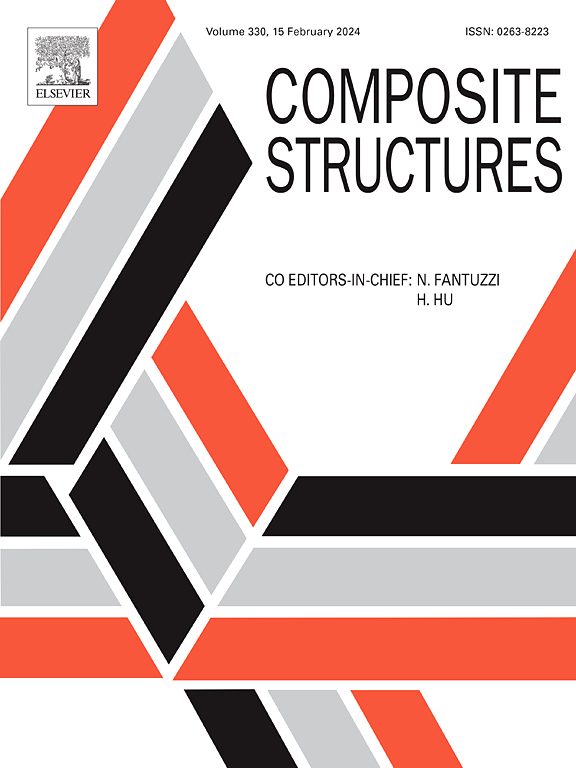Metallic plate-lattice and epoxy interpenetrating phase composites for superior behavioral characteristics
IF 6.3
2区 材料科学
Q1 MATERIALS SCIENCE, COMPOSITES
引用次数: 0
Abstract
Metallic plate lattices are prone to localized buckling under external compressive loads, leading to a progressive instability of the entire structure, which remarkably limits the mechanical performance and promising application of plate lattices. To address this, we propose a novel design strategy that combines 3D printing and resin infiltration methods to construct the plate lattice-epoxy resin interpenetrating phase composite (FCC-IPCs). Quasi-static and dynamic mechanical properties and deformation modes of FCC-IPCs are investigated through simulations and experimental methods. By implementing this design strategy, deformation mode has successfully transformed from progressive instability to overall shear failure, where significant improvement in mechanical properties can be harvested. Under quasi-static loading, 36.1%, 70.6%, and 75.7% increases can be seen in specific peak stress, specific plateau stress and specific energy absorption of the FCC1-IPCs specimen, respectively. Under dynamic loading, specific plateau stress and specific energy absorption can increase by 100.7 % and 101 %, respectively. Furthermore, this design strategy is not sensitive to manufacturing defects or holes, exhibiting good robustness and applicability in aerospace and automotive engineering.
求助全文
约1分钟内获得全文
求助全文
来源期刊

Composite Structures
工程技术-材料科学:复合
CiteScore
12.00
自引率
12.70%
发文量
1246
审稿时长
78 days
期刊介绍:
The past few decades have seen outstanding advances in the use of composite materials in structural applications. There can be little doubt that, within engineering circles, composites have revolutionised traditional design concepts and made possible an unparalleled range of new and exciting possibilities as viable materials for construction. Composite Structures, an International Journal, disseminates knowledge between users, manufacturers, designers and researchers involved in structures or structural components manufactured using composite materials.
The journal publishes papers which contribute to knowledge in the use of composite materials in engineering structures. Papers deal with design, research and development studies, experimental investigations, theoretical analysis and fabrication techniques relevant to the application of composites in load-bearing components for assemblies, ranging from individual components such as plates and shells to complete composite structures.
 求助内容:
求助内容: 应助结果提醒方式:
应助结果提醒方式:


